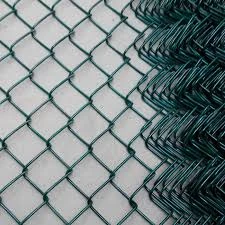Fence Post Rot Protection Ensuring Longevity and Durability
When it comes to maintaining the integrity of your fencing, one of the most critical issues to address is fence post rot. Wooden fence posts are particularly susceptible to decay, which can lead to structural failure and necessitate costly repairs or replacements. Understanding the causes of rot and implementing effective protection measures is essential for preserving your fencing investment.
Understanding Fence Post Rot
Fence post rot typically occurs due to prolonged exposure to moisture, combined with the organic materials in wood that can attract mold, fungi, and insects. When water accumulates at the base of the post, it creates an ideal environment for rot to set in. Additionally, soil-borne fungi can find their way into the wood, breaking down its fibers and compromising its strength. The most common types of rot affecting fence posts are fungal decay and insect damage, both of which can be devastating if not properly managed.
Choosing the Right Material
One of the initial steps in protecting your fence posts from rot is selecting the right material. While traditional wood has been a popular choice for fencing, modern alternatives such as vinyl, metal, or composite materials are becoming increasingly popular due to their resistance to rot and decay. If you prefer the aesthetics of wood, consider using pressure-treated lumber, which has been chemically treated to resist moisture and deter insects. Cedar and redwood are also naturally resistant to rot due to their high oil content.
Proper Installation Techniques
The installation process plays a crucial role in preventing rot. Ensure that the fence posts are set in concrete rather than directly into the ground. This creates a barrier between the wood and the surrounding soil, minimizing contact with moisture. It is advisable to bury the posts to a depth of at least 1/3 of their overall length, which enhances stability. Additionally, ensure that there is a slight slope away from the post to direct water away from the base, reducing the likelihood of water accumulation.
fence post rot protection

Implementing Protective Treatments
Even with careful material selection and installation, applying protective treatments can further enhance the lifespan of your fence posts. Several options are available
1. Sealants and Preservatives Applying sealants or wood preservatives can create a moisture barrier, preventing water from penetrating the wood. Be sure to choose products specifically designed for outdoor use, as they will be more effective against the elements.
2. Regular Maintenance Periodic maintenance is essential for the longevity of your fence posts. Inspect the posts regularly for signs of wear or damage, and reapply sealants as needed. Cleaning the area around the posts to remove debris and vegetation can help improve air circulation and reduce moisture buildup.
3. Post Caps Installing post caps can provide an additional layer of protection by shielding the top of the posts from direct rainfall. This small yet effective measure can significantly reduce the amount of water that seeps into the wood, further extending its lifespan.
Conclusion
Fence post rot is a common issue that can compromise the stability and appearance of your fencing. By understanding the causes of rot and implementing protective measures, you can significantly enhance the longevity and durability of your fence posts. From choosing the right materials and employing proper installation techniques to using protective treatments and maintaining regular upkeep, each step you take will contribute to a robust and resilient fencing system. Investing time and resources into fence post rot protection is not only practical but also ensures that your investment holds value and beauty for years to come. Whether you are a homeowner looking to secure your property or a professional builder committed to quality, prioritizing fence post longevity is a wise and beneficial choice.
















